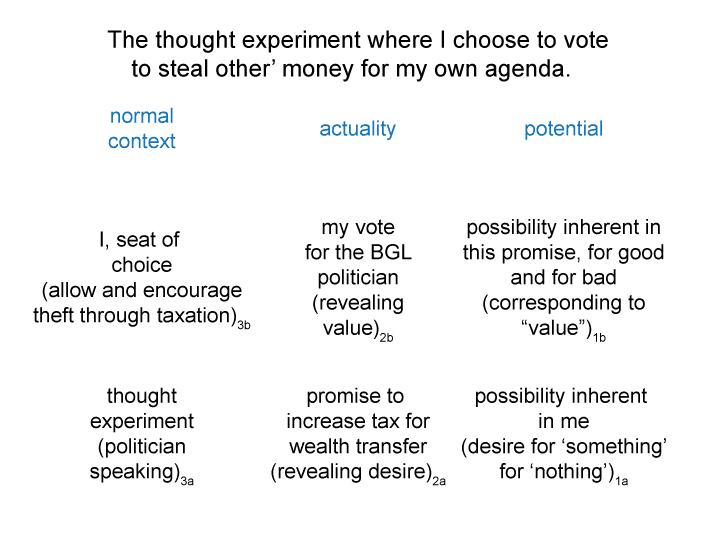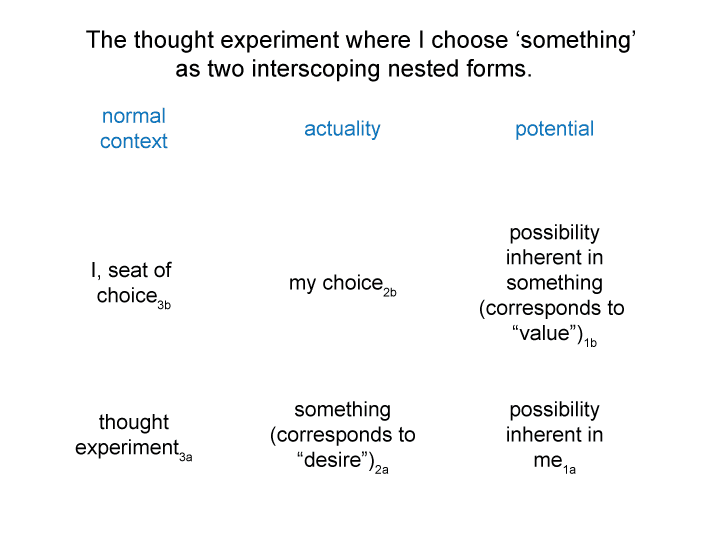Man and Sin by Piet Schoonenberg (1964) 2.3 GG
Summary of text [comment] page 83
[Consider the idea of stealing apples.
How about voting for a sovereign who promises take apples from others and giving them to me?
What if I vote to take wealth from others but not myself.
How is that different from theft?
Here is a choice (a vote, expressing a value) that virtually situates something (a promise, expressing a desire to get something for nothing).]
Man and Sin by Piet Schoonenberg (1964) 2.3 GF
[Of course, canning applesauce is not sinful, but you, dear reader, may conjure more lurid examples.]
Man and Sin by Piet Schoonenberg (1964) 2.3 GE
[The second step involves a decision:
I am going to can apple sauce2b. Or I am not.
In order to do so, I must consider the potential of something concerning making a choice1b. This corresponds to value1b.
For example, do I have the ambition to do the task? How important is the task to me1b? How do I value this opportunity1b?]
Man and Sin by Piet Schoonenberg (1964) 2.3 GD
[Here is the first step:
The thought experiment (of canning for the winter)3a poses an actuality2a that has ‘something’ to do with me1a. That actuality2a reveals my desire1a.]
Man and Sin by Piet Schoonenberg (1964) 2.3 GC
[How about an example?
Here is a scenario.
My friend calls. She tells me that there are great apples on sale at the farmer’s market.
I think, ‘Maybe I should be canning apple sauce for the winter.’]
Man and Sin by Piet Schoonenberg (1964) 2.3 GB
Summary of text [comment] page 83
[Does the potential that underlies my choice1b virtually emerge from and situate the possibilities inherent in me1a?
Does value1b virtually emerge from and situate desire1a?
Let me walk through this.
The first step is to look at the content-level nested form.
A thought experiment3a brings something (revealing desire)2a into relation with the possibilities inherent in me (corresponding to desire)1a.
The second step is goes with the situation level.
I decide3b about this something2a.]
Man and Sin by Piet Schoonenberg (1964) 2.3 FZ
Summary of text [comment] page 83
[The two nested forms may either interscope or intersect.
They interscope according to the previous diagram.
I, seat of choice3 belongs to a higher category.
Why?
It virtually situates the thought experiment3-lower level.
In other words, a possibility inherent in something (revealing my desire)2, lower level offers the opportunity for ‘I3, higher level’ to make ‘a choice2, higher level’.
The two levels, for sensible construction, are situation and content.]



